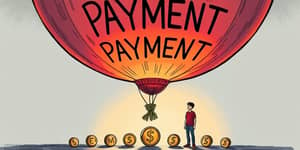
Closing a loan early might feel like a triumphant step toward freedom, but unseen fees can turn celebration into regret. By understanding every contract term, you can protect your hard-earned savings and steer your financial journey with confidence.
A prepayment penalty is a fee charged when you repay all or part of a loan before its agreed-upon term. Lenders impose these charges to compensate for lost interest revenue and costs associated with early closure.
Whether it’s a mortgage, auto loan, personal loan or business financing, prepayment penalties can add up and erode the benefits of paying off debt ahead of schedule.
Most penalties are calculated as a percentage of the outstanding loan balance, usually between 1% and 2%. For example, if you have $7,000 remaining on an auto loan and your agreement specifies a 2% fee, you’ll owe an extra $140 to close the loan early.
On a $25,000 personal loan, paying off a $16,378 balance early triggers the same 2% penalty, which equals $327.56. Even after covering that fee, you may still net substantial savings—in one case, borrowers saved over $2,150 in interest despite the penalty.
Prepayment clauses vary widely. Some loans impose a flat fee regardless of balance, while others apply a percentage rate. Certain mortgages only charge penalties within their first three to five years.
These clauses can effectively lock in borrowers and reduce mobility, making refinancing or selling a property prohibitively expensive. Subprime mortgage borrowers face these penalties in up to 80% of cases, compared to just 2% for prime loans.
Regulations on prepayment penalties differ by state and loan type. Federal law prohibits penalties on auto loans with terms under 60 months, while mortgages can vary by state limits and conditions.
Between 2018 and 2022, only 4–5% of new U.S. mortgages included prepayment penalties, a decline reflecting tighter oversight. Consumer protections continue to evolve, so always verify current rules where you live.
Lenders impose penalties to offset prepayment risk and lost revenue. In turn, borrowers often receive a lower rate compared to a loan without a penalty clause. For some, the trade-off makes sense—especially if you expect to keep the loan until its natural maturity.
However, riskier borrowers may find penalties bundled with attractive rates, a combination that can tip into predatory lending if they aren’t vigilant.
Before accelerating payments, calculate total savings versus fees. Sometimes, even with a penalty, early payoff yields a net gain. In other cases, the charge wipes out most benefits or leaves you worse off.
Concrete scenarios illustrate the real stakes. Below is a summary of typical outcomes when borrowers close loans early and face penalties.
If you intend to hold a loan for its full term, accepting a small prepayment penalty in exchange for a lower interest rate can be advantageous. Short-term loans rarely see early payoffs, so the risk remains minimal.
Evaluate your long-term goals: if you plan to invest saved interest elsewhere or expect to refinance under better conditions, the penalty may be a tolerable trade-off.
Understanding prepayment penalties transforms a potential pitfall into a strategic advantage. Armed with knowledge and practical negotiation tactics, you can secure financing that aligns with both your budget and life plans.
Before you sign any agreement, take the time to dissect every term, run the numbers, and ask the tough questions. By doing so, you’ll not only avoid costly surprises but also pave a smoother path toward true financial freedom.
References













